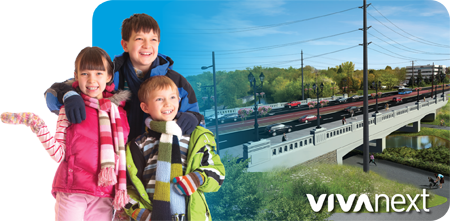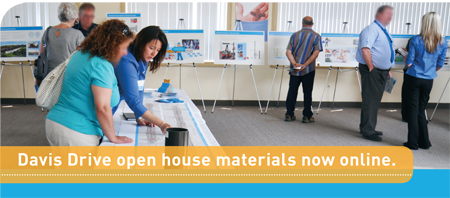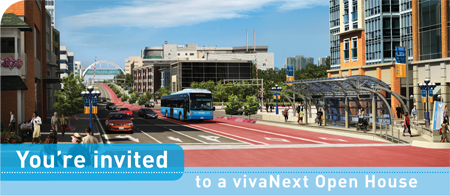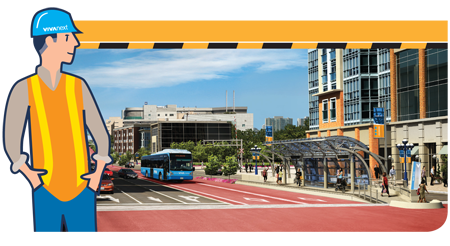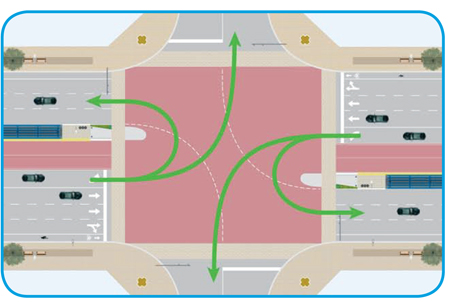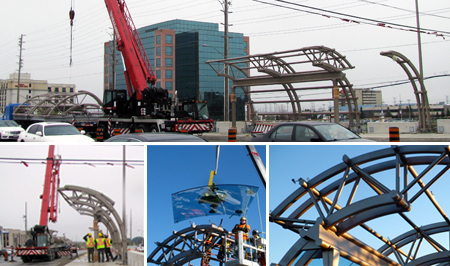 If you’ve been driving along Highway 7 East lately, you’ll notice an exciting development taking shape on our Highway 7 rapidway: the installation of the first of 22 vivastations.
If you’ve been driving along Highway 7 East lately, you’ll notice an exciting development taking shape on our Highway 7 rapidway: the installation of the first of 22 vivastations.
And like everything else on the vivaNext project, the station that we’re going to be building in the median at Leslie and Highway 7 is the product of literally years of design, planning and preparation. Here’s a primer on the stations, and how they’ll be installed.
Like their predecessor at Warden Station on Enterprise Boulevard, our vivastations along Highway 7 are going to be beautiful, strong and very functional. The curved viva blue glass that makes up the canopy is surprisingly rugged – this glass is curved, tempered and laminated for strength, which prevents it from breaking into sharp pieces if it is cracked or broken. Reliability was our first priority in sourcing the manufacturer: our glass panels are actually being made by the company that makes nearly half of the world’s windshield glass.
Although the canopy is made up of nearly 100 individual panes of glass, each will be connected to its neighbour by small fasteners, known as “spiders” – so visually, the glass will look like it’s all one piece.
Supporting the glass underneath is a three-piece structure made of Canadian-fabricated steel, constructed just outside of Paris, Ontario. With durability in mind, the steel will be finished with a high-quality automotive-grade paint to minimize long-term maintenance costs.
Before the station components are delivered, a concrete platform is poured and set, and the connections built into the platform are prepared. Then the canopy’s three steel structural sections are brought in on a wide-load tractor trailer and installed. It takes about a week to align the sections perfectly and do some other prep, in advance of the glass being delivered and installed.
Each station includes two platforms/canopies – one for eastbound passengers and one for westbound passengers. Our schedule calls for the construction of one station canopy a month, with eastbound and then westbound canopies being built along the Highway 7 East rapidway throughout the rest of this year. There are a number of steps involved in getting the platforms ready before the glass and steel can be delivered; each platform requires about 12 weeks of work including excavations, installing electrical cables and concrete work.
One of the strategic decisions we made in the beginning for the vivaNext program is to build our rapidway segments consecutively, enabling our designers and construction experts to assess the experience of the previous segment and continually fine tune the design and construction methods. Lessons learned from our experience building the Warden Station have helped us find ways to modify the design, to make the canopies easier and more efficient to install. And because minimizing traffic impacts along the Highway 7 corridor is so critically important, our team has focused on finding strategies to install these huge canopies in a very small space with minimal lane closures.
Beyond providing rapid transit users with a comfortable and convenient experience, our vivastations are going to give a defining look and feel to Highway 7, as it becomes increasingly urbanized and developed over the next few years. We think that’s a milestone that’s really worth celebrating.

